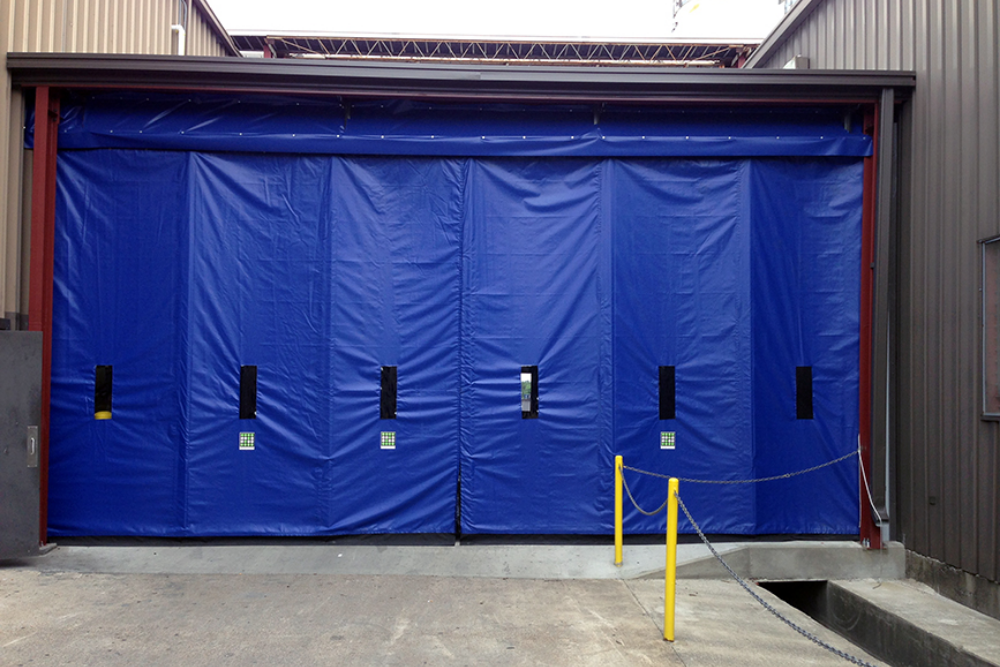ARE ALL INDUSTRIAL CURTAIN WALLS CREATED EQUAL?
Whether it’s a freezer/cooler insulated curtain, a food processing wash-down barrier curtain, a simple area separator curtain, or an outdoor wind resistant curtain, all curtain walls on today’s market are NOT created equal.
While each curtain wall is designed to fill a different function, all are connected by some common threads that should be taken into account when deciding upon a flexible curtain wall, such as functional, innovative design, high-quality materials, professional manufacturing, and thorough customer service.
Insulated or Non-Insulated Curtain Walls
Any curtain wall should use only fire retardant fabrics, per NFPA 701, backed up by published test reports. All insulating materials should be treated with an anti-microbial agent to prevent mold or mildew growth. All sewn seams should be two-needle lock stitched and all seam terminations should be back tacked. The use of high-quality synthetic rubber floor sweeps for flexibility in cold environments is recommended. Insulated curtains should contain insulation too, and into the top and bottom curtain hems for maximum insulating value.
Wash Down Curtain Walls
The fabric should be FDA and/or CFIA compliant, backed up by certification. All seams should be heat welded, with no bacteria harboring unsealed edges. Wash-down Curtain panels joined in the field should either overlap or use a non-harboring field joint like a slide rail fastener. All hardware, including grommets, trolleys, roller track, and hangers should be of 304 stainless steel.
Outdoor Curtain Walls
First and foremost, any outdoor curtain should be designed to handle expected wind loading, and any supplier should be expected to provide wind pressure analysis for their curtain components. Outdoor sliding curtains should incorporate some type of wind restraint, whether pipe staffs with drop pins, stationary steel framework, or guy wire cable restraint system.
Customer Service
Good customer service starts with a supplier understanding a customer’s true needs. Expect your curtain supplier to be on-site to learn your application, measure the site and go over product details. If it’s an energy savings project, ask your supplier for an analysis of potential energy savings when using their product. Any analysis should be done per ASHRAE standards.
Expect timely submittal/approval drawings of your curtain wall project from the supplier. This prevents nasty surprises at installation, as well as potentially costly delays. Finally, expect your supplier to respond promptly to your inquiry or any problems during or after installation.
Contact the Experts
Stokes Equipment is a reliable company known for great customer service for all of your warehouse safety needs. Whether you’re looking for material lifts in Montgomery County, PA, or high-speed rubber doors in South Jersey, our experts are there to guide you through what works best for your facility.





